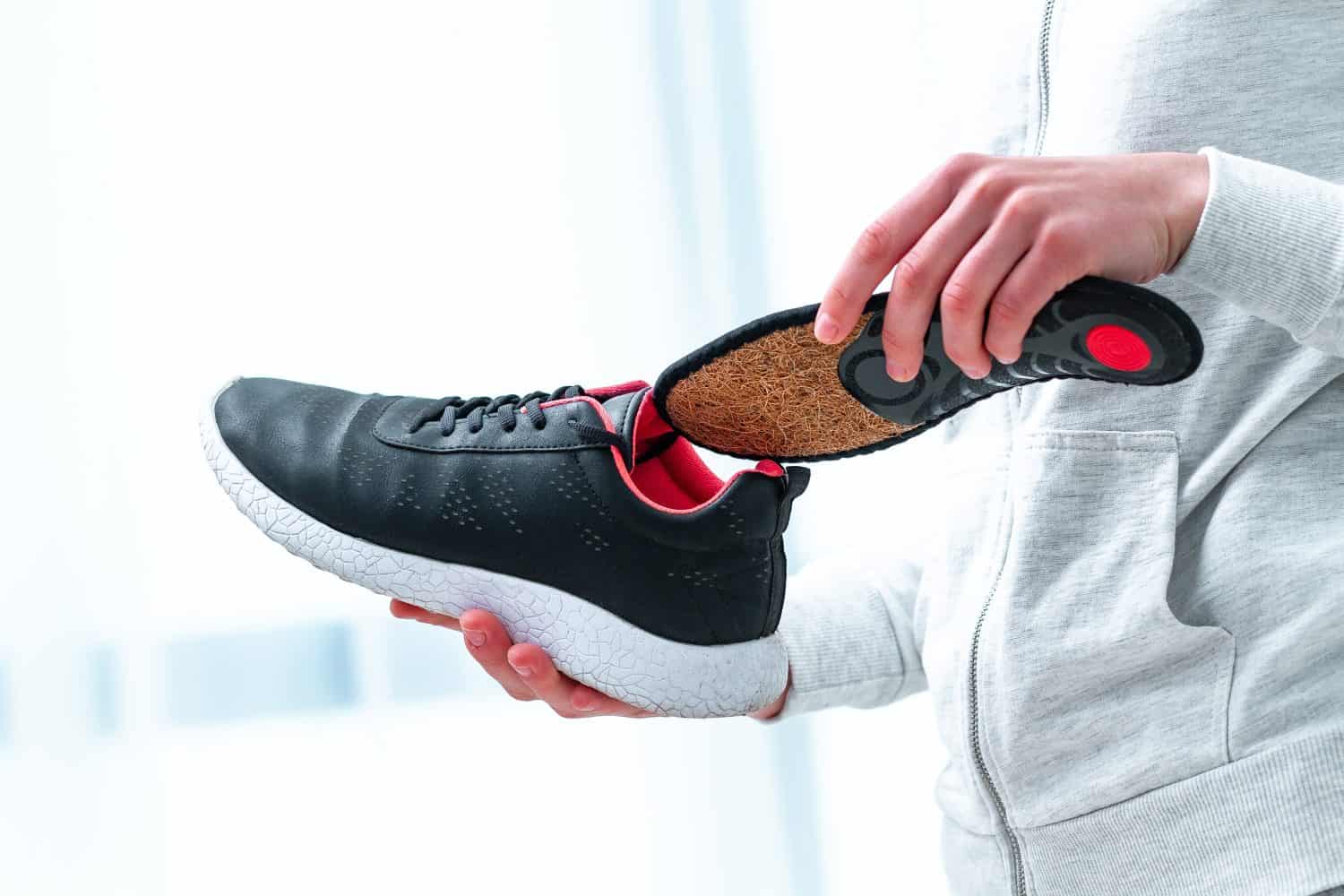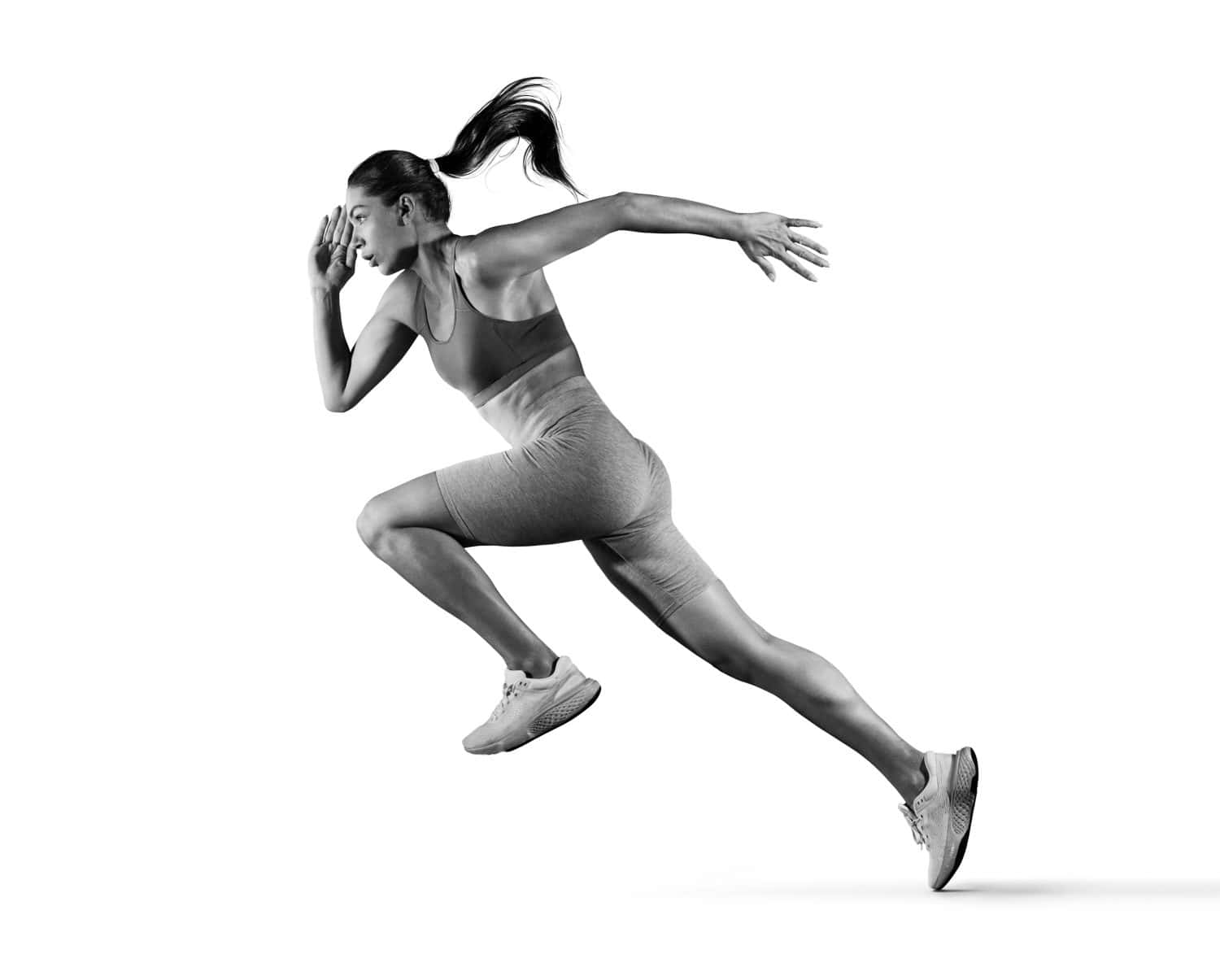Founded on January 25, 1964, as Blue Ribbon Sports before officially adopting its iconic name on May 30, 1971, Nike slowly but surely grew into the most visible and innovative shoe company in history. Aptly named after the Greek goddess of victory, Nike consistently revolutionized the sneaker game on its way to becoming the most valuable sports apparel brand in the world. Along the way, Nike released a range of products, many of which you never knew existed.
Be it transcendental sneakers seeking to shift the perception of apparel for a certain sport, or simply an entry into a non-conventional sports arena like horse-riding, Nike has always taken chances. While not all of those chances succeed, many of the failures still stand as worthy experiments in design. In this article, we will explore 20 Nike Products you never knew existed. Some are functional, others wildly experimental, but all of them support the legacy of Nike as a design innovator.
To compile a list of the 20 Nike products you never knew existed, 24/7 Tempo consulted a range of fashion, apparel, and lifestyle publications including SoleRetriever, Outsons, The SoleSupplier, and HighSnobiety. Next, we selected products of singular design and intention that made a blip on the apparel radar before falling into obscurity from lack of interest or consolidation into other Nike designs. After that, we confirmed aspects of each product design and production history using sites like Nike.com and other websites providing unique historical information about Nike products. (For obscure products of a more tech variety, discover 20 Microsoft products you never knew existed.)
Nike Bauer Supreme One90

One of the Nike products you never knew existed is the Bauer Supreme One90. Long before the shoe-skate hybrid saw release, Nike acquired Canstar, the parent company of Bauer and one of the titans of ice hockey skate/footwear. It took another decade and some change, however, before Nike officially entered the hockey world. In 2006, the company released the Bauer Supreme One90, the first Nike ice skate.
Adorned with the classic Nike swoosh as well as Bauer’s logo, the skate resembled past ice skate models with a prominent sneaker twist. It featured a sneaker-like design, high ankle support, and the comfort that made Nike famous. The foray into hockey did not last long, however, with the company selling Canstar to Roustan Inc. and Kohlberg & Co. in 2008. Nevertheless, the hockey skate shoe trademark lived on for a few more years, showcasing the unique collaboration between two shoe industry powerhouses.
Nike Air Max TL2.5

As one of the more elusive of the Air Max models, the Air Max TL2.5 is one of the Nike products you probably never knew existed. Inspired heavily by the previous Air Max 97 model, the Air Max TL2.5 hit the market in 2006. While multiple colorways saw release in its short-lived campaign, it quickly fell into sneakerhead obscurity with scant information about the shoe online.
The Air Max TL2.5 featured a full-length Air Max unit within the shoe’s midsole and a rhinestone-like swoosh logo on both sides, resulting in a chunky yet flowy design that seemed both vintage and futuristic. Though one of the more obscure and short-lived Nike shoes, it remains a boon for collectors as very few models ever pop up on resale marketplaces or websites.
Nike HyperKO
Another one of the Nike products you never knew existed is the HyperKO. After Sylvester Stallone sported Nike apparel in “Rocky III, the company seized the opportunity and made a slow but steady entrance into the world of boxing. Upon Manny Pacquiao’s meteoric rise in the sport, known for his constant wearing of Nike gear, the company grew inspired enough to release its unique twist on boxing apparel.
Enter shoe models like the Machomai and the HyperKO, the first Nike shoes devoted entirely to boxing. They featured high (very high) tops providing ankle support, lightweight builds for increased agility, and noted breathability. Though these boxing shoes no longer sit on Nike’s website, they can still be had through Athlete Performance Solutions (APC), the authorized distributor of Nike boxing apparel. If you live in Mexico, however, the Nike boxing models are accessible through the company’s official website.
Nike Air Max Craze

Another one of the Nike products you never knew existed is the Air Max Craze. Launched in 2000 as part of Nike’s Alpha Project, the eye-catching Air Max Craze was released as an exclusive vintage running shoe for women with technological and lightweight functions for a range of dynamic activities.
The Air Max Craze model featured Nike Heel Fit technology and a lacing system with an external zipper-closed cover resulting in a vibrant and futuristic appearance. Furthermore, the shoe’s Air Max system under the heel provided a PSI rating of 12, which Nike boasted as ideal for women. While the shoe saw heavy promotion in the first year of the millennium, it quickly disappeared, with no sense of a rerelease in the future.
Nike Air Zoom Citizen

Another one of the Nike products you never knew existed is the Air Zoom Citizen. Like the Air Max Craze, the model saw release as part of Nike’s Alpha Project. A much-hyped model at the time, the Air Zoom Citizen took inspiration from the running spike-clad shoes worn by Olympic gold medal winner Michael Johnson.
Released in tandem with the Air Vis Zoom Uptempo worn by basketball stars Allan Houston and Alonzo Mourning, the model featured the company’s first visible Zoom Air unit. Though this addition went on to inspire a litany of later Nike shoes, the Air Zoom Citizen failed commercially. So much so, that many pairs ended up languishing in Nike Factory outlet stores within a few years.
Nike LunarENDOR QS

Another one of the Nike products you never knew existed is the LunarENDOR QS. Though it started as a basketball and tennis shoe company, by the new millennium, Nike made explicit forays into less traditional sports. One such sport was snowboarding, which gave us the decidedly futuristic-looking LunarENDOR QS.
Inspired by classic Nike designs like the Dunk and Air Force 1 models, the LunarEndor QS snowboard boot featured customizable flex for varying levels of stiffness, flywire inner lacing providing a glove-like fit, and an LED Swoosh logo with an on-off button atop the boot. By 2014, however, Nike ceased production of its snowboarding gear. Instead, it opted to focus on another extreme sport, skateboarding. Whatever the reason for the switch, the removal of Nike’s bottomless pockets left a sizable hole in the snowboarding appeal industry.
Nike Air Zoom Carbon Inline Rollerblades

Much like Nike’s unexpected but welcome transition into the ice hockey world, the Air Zoom Carbon Inline Rollerblades came as an unexpected but fulfilling transition into hockey’s asphalt-laden cousin, rollerblading. Enter the Air Zoom Carbon Inline Rollerblades, the first and last Nike rollerblade model inspired by older track and field shoe models.
The Air Zoom Carbon Inline Rollerblades featured a highly durable yet flexible design, seeking a level of speed and agility normally reserved for ice skates. Furthermore, its homage to the Bauer Collab ice skate design and premium build appealed to both casual users and experienced rollerbladers. Nike’s rollerblading foray was short-lived, however, echoing the destiny of its ice skate model. Nevertheless, the Air Zoom Carbon Inline Rollerblades can still be found on secondary marketplaces like eBay.
(For other unique 90s apparel, discover the most iconic fashion trends of the ’90s.)
Nike Ippeas

Another one of the Nike products you never knew existed is the Nike Ippeas, the only equestrian-based shoe ever produced by the shoe giant. With Ippeas, translated from Greek as “rider,” Nike made a bold move into the world of horse-based sports in 2008. To make its mark, Nike’s unprecedented model featured the elegance of a classic equestrian boot infused with innovative features emblematic of Nike’s pursuit of performance enhancement.
The Nike Ippeas featured a classic leather build, full-length Zoom Air cushioning underfoot, and an adjustable titanium screw-in spur system inspired by track shoes. Furthermore, the Ippeas included a high-abrasion synthetic rubber medial cushion, enhancing the rider’s grip on both spur and saddle. Though the Ippeas was Nike’s singular horse-riding release, it remains one of the more unique and innovative moves ever made by the company.
Nike Air Storm Beacon

Dramatic cloud and thunderstorm over an island. Multiple Lightnings
Another one of the Nike products you never knew existed is the Air Storm Beacon. Launched in 2004, this model sought to earn the attention of hikers and outdoors-oriented consumers with its innovative fast-drying system adapted for running in rainy weather conditions. Nike also released the Air Summer Beacon in tandem, featuring a more breathable exterior created for sunnier weather conditions.
As for the Air Storm Beacon, the model featured an underfoot cushion rising slightly to the heel, a thin, breathable texture, and an aesthetic reminiscent of water stains on glass, giving it a unique, organic appearance. While other products on this list quickly lapsed into obscurity, the Air Storm Beacon and its cousin the Air Summer Beacon became incredibly popular with sneakerheads. Indeed, over 10 unique colorways of these models saw release in only two years.
Nike Air Kantara

As evidenced by this list, it seems Nike went on a release spree at the dawn of the new millennium. The Air Kantara model was no exception. Launched between 2002 and 2005 as part of the Bowerman series in honor of Nike co-founder Bill Bowerman, the Air Kantara featured the handiwork of famed shoe designer Steven Smith.
As for the specifications, the Air Kantara featured the first ever visible display of the company’s Air technology on one side. The other side, however, featured Tuned Air units. This design sought to lend extra support to people with a tendency to overpronate their movements. While the Air Kantara failed to reach commercial success, it did provide a launching pad for the vastly more popular Air Kantara II.
Nike Air Max 360

As evidenced by this list, Nike released a gaggle of various Air Max models throughout the years to uneven success. One such model is the Air Max 360, which saw notable success after its launch in 2006. Initially launched as a running shoe, its sleek aesthetic earned the attention of sneakerheads who transformed it into a lifestyle model.
As for the shoe, the Air Max 360 featured an OG University Red colorway inspired by Tinker Hatfield’s classic Air Max 1. Furthermore, it featured Air Max technology running the length of the shoe and providing extra cushion. While a success, the Air Max 360 failed to see a Retro release for one reason or another. As for grabbing a pair these days, it’s unlikely as many of the original pairs degraded significantly over time.
Nike Zoom Swift Vapor

Another one of the Nike products you never knew existed is the Zoom Swift Vapor. This model line was available as early as 2002 through Nike Lab’s dedicated website as a testament to the innovations undertaken at the Nike Lab. Its design sought to capture the all-purpose running shoe market.
The Zoom Swift Vapor featured a relatively conventional Nike sneaker aesthetic, a three-dimensional, glossy Swoosh logo, as well as a caged Zoom Air unit within the sole. Though the model Nike Air Zoom Spiridon popularized this feature, the Zoom Swift Vapor featured it first. Its release met little success, however, remaining in production for less than a year.
2001 Nike Air Sunder Max

Marketed with the tagline “For the athlete preparing to compete in any environment,” the 2001 Nike Air Sunder Max sought to provide a new option for cross-training purposes. Keeping with the theme, Nike released several variations on the model including the Air Sunder Max Mid and Lo, the Air Sunder Mid G, and the Air Sunder Canvas Lo.
With a futuristic look, a zip-up covering over the laces, unparalleled comfort, and strange porous-like elements running the length of the shoe, the Air Sunder Max became a hit among the streetwear crowd. Its strange, tessellated-like sole grips only solidified its unexpected market. While no doubt, a popular model ahead of its time, the Air Sunder Max has yet to see a much-awaited retro release.
Nike ACG Trainerendor

Another one of the Nike products you never knew existed is the Nike ACG Trainerendor. Launched in 2013 as part of the company’s All Conditions Gear Line, the Trainerendor took inspiration from the Nike Air Trainer 1. It quickly became a favorite due to its stylish, low-key, all-purpose design.
The ACG Trainerendor featured a speckled midsole as well as a Velcro forefoot strap much like its inspiration the Air Trainer 1. Though only produced for a couple of years, Nike adapted its unique design for later Nike SB model sneakers, adding additional cushioning and durable upper elements.
Nike ISPA OverReact Flyknit

Just when you think Nike has done it all, they embark on an unconventional line like the ISPA. As an acronym, ISPA stands for “Improvise, Scavenge, Protect, and Adapt,” which gives telling clues to the direction this design team took with ISPA models. One such shoe is the ISPA OverReact Flyknit.
A wild-looking shoe, the OverReact Flyknit took cues from the original ISPA React and turned it up a couple of notches. It featured a very chunky, rough-terrain sole, laces that fastened, tied, or snapped all at once, and a design that changed in color, style, and texture from inch to inch. Though arguably a more haute couture, limited release, the ISPA OverReact Flynit can still be found at specialty shops and other boutique resellers.
Nike Air Max 94

Another one of the Nike products you never knew existed is the Air Max 94. Another installment in the long line of Air Max shoes, the ’94 version took design inspiration from earlier iterations like the Air Max Light and Air Max 93. However, the Air Max 94 failed to find commercial success or a later cult following.
It featured an extended matte Swoosh logo, low ankle rise, and an Air Max unit in the insole with interior caging. Though it originally launched with a Court Purple colorway, no more colorways saw release. Furthermore, it was upstaged almost immediately by its predecessor, the AM93. Nevertheless, Nike remained determined, launching numerous rereleases of the Air Max 94 over the years.
1997 Nike Lien Mid

Another one of the Nike products you never knew existed is the 1997 Nike Lien Mid. Seemingly a test run for later skateboarding-oriented shoes, the 1997 Lien Mid launched with both mid and low-top variations and design elements that later featured heavily in the company’s SB skateboarding models.
As for the shoe, the 1997 Lien Mid resembled something like a chunky baseball cleat, with a varied sole grip texture and a double-looped lacing system including a partial-covering element. Furthermore, it featured a Phylon midsole and an Air unit in the heel. Finding a pair of these sneakers in the modern day is increasingly hard due to their use for skateboarding, which often destroys the fabric and makes them untenable for resale.
Nike Air Max 2003

Another shoe in the long line of Nike Air Max models, the Air Max 360 saw public release in 2003. Designed by Sergio Lozano, best known for the AM95 shoe, the Air Max 360 provided a more all-purpose sneaker than many of the other Nike models released at the time.
No matter how you slice it, however, the Air Max 360 was lacking in several departments. While it featured a full-length Air Max insole much like its relative the Air Max 97, the 360 looked like a garden-variety tennis sneaker without much adornment or unique features. Furthermore, no mentionable colorways saw release during its short run. As such, it never saw rerelease, relegated instead to the dustbin of Nike shoe history.
Nike ISPA Link

As previously mentioned, Nike turned many a head with the launch of its wildly artistic and innovative ISPA shoe line. One such addition to the select catalog was the ISPA Link, a head-turning take on the sneaker with design elements inspired by Japanese aesthetics and a strict “form follows function” design philosophy.
Resembling a mutant golf shoe or something like a large dinosaur footprint, the ISPA Link featured three interlocking, interconnected modules stitched together without shoe glue. Furthermore, it featured a midsole with grippy pegs connected to the upper shoe, providing unconventional but satisfying comfort and support. One of the more artistic shoes in Nike’s history, the ISPA Link and its variations remain one of the more obscure, creative attempts by the shoe giant.
1996 Nike Trog

Another one of the Nike products you never knew existed is the 1996 Nike Trog, a shoe with a strange name and even stranger, yet innovative design. The brainchild of designer Tory Orzeck, the Trog acted as the high watermark of design research undertaken at Nike since the early 1990s. As for its look and feel, it remains a singular offering by the company.
Resembling something like a cross between a hiking boot, mocassin, and skateboarding shoe, the 1996 Nike Trog featured an outsized chunky sole with swirling grip textures, suede overlays reinforcing a breathable upper quadrant, and midsole tooling reminiscent of its inspirations the Nike Air Snak. A predecessor to the lauded Nike SB skateboarding shoe line, the 1996 Nike Trog remains a singular achievement in sneaker history.
(For other sports info from Nike’s home state, meet the 10 biggest sports stars from Oregon.)
